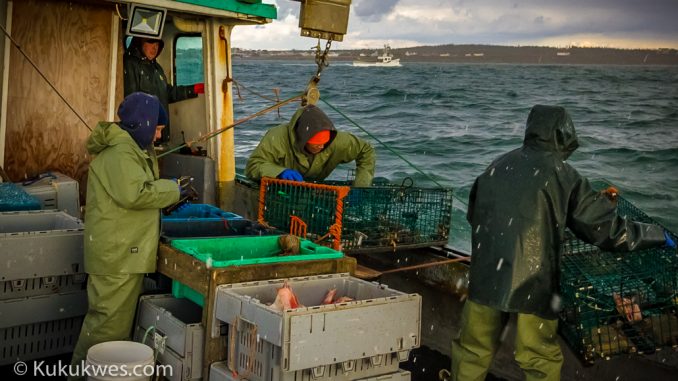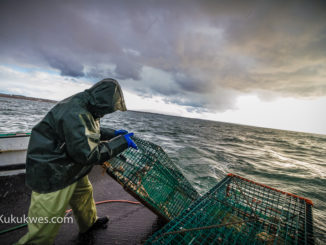
A councillor with the Sipekne’katik band in Nova Scotia says the lead negotiator with the Department of Fisheries and Oceans has yet to meet with chief and council to discuss the definition of moderate livelihood from the commercial fishery.
Jim Jones, who was appointed by Fisheries Minister Dominic LeBlanc last November hasn’t contacted Sipekne’katik Chief and Council to begin negotiations with the First Nation, Councillor Alex McDonald says.
“We haven’t spoken to DFO about moderate livelihood,” McDonald said. “DFO hasn’t approached us. They’ve mainly focused on the (11) bands that are caught up with KMKNO which we’re not part of.”
According to a spokesperson with the Department of Fisheries and Oceans in Ottawa, Jones has met with all First Nations in the Maritimes and the Gaspé region of Quebec except one since he was appointed.
The spokesperson declined to name which First Nation the federal negotiator hasn’t met with citing the confidential nature of the negotiations. However, he did confirm that Jones has reached out to the unnamed First Nation but no meeting has been set to date.
Sipekne’katik Chief Mike Sack declined a request from Ku’ku’kwes News for an interview.
DFO negotiator has met twice with ANSMC
According to Membertou Chief Terry Paul, the Assembly of Nova Scotia Mi’kmaq Chiefs has met twice with Jones since he was appointed seven months ago. Chief Paul, who co-chairs the ANSMC, said the assembly has established a steering committee through the Kwilmu’kw Maw-klusuaqn Negotiations Office or KMKNO to work with the lead federal fisheries negotiator on defining a moderate livelihood.
According to its website, KMKNO was established in 2004 to represent “negotiations on behalf of the Mi’kmaq of Nova Scotia, with the Province of Nova Scotia and the Government of Canada” in implementing rights guaranteed in the Peace and Friendship treaties signed between the Mi’kmaq and the British in the 1700s.
The Assembly of Nova Scotia Mi’kmaq Chiefs represents all 13 Nova Scotia First Nations in the province. However, Sipekne’katik and the Millbrook First Nation are not a part of KMKNO.
In an email reply to Ku’ku’kwes News, a spokeswoman with KMKNO confirmed that both Sipekne’katik and Millbrook are not part of the steering committee’s discussions.
When Sipekne’katik withdrew from KMKNO in 2013, it set up its own negotiations and consultation process to implement treaty rights.

McDonald says while he and his fellow band councillors and chief wait for Jones to contact them, they’re ready to start their own discussions with band members to define what a moderate livelihood from the commercial fishery means to them.
“We’ve been trying to get our fisheries manager and the chief to call a public meeting with the community to talk about moderate livelihood,” McDonald said. “We want to be ahead of the other bands and we’re falling behind.”
“What we need to do first is consult with our band membership. We need to sit down. We need to host meetings, you know, weekly meetings,” he said.
Sipekne’katik is the second largest Mi’kmaw band in Nova Scotia. Its largest community, Indian Brook First Nation, is located near Shubenacadie, N.S.




